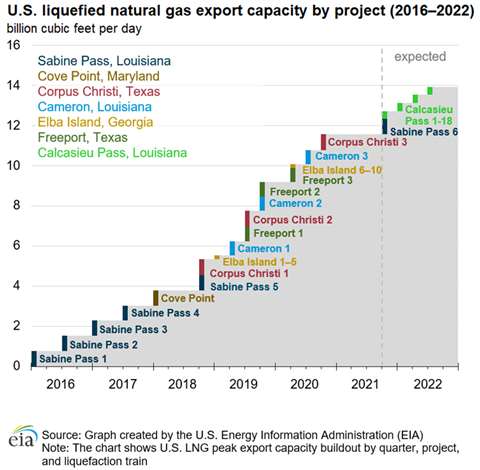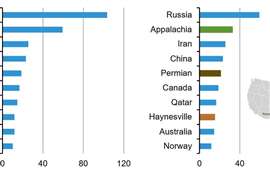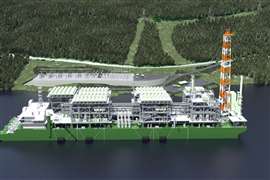U.S. LNG export capacity expected to continue to grow
December 03, 2021

After three key liquefied natural gas (LNG) trains are put into service in 2022, the U.S. LNG export capacity will grow to become the largest in the world, according to a recent survey from the U.S. Energy Information Administration.
The U.S. began exporting LNG in 2016, and since then, its capacity has grown to the third-largest exporter behind Australia and Qatar. Now, new trains under construction at Sabine Pass and Calcasieu Pass are scheduled to come online in 2022, making the U.S. the world’s largest exporter.
Train 6 at the Sabine Pass LNG export facility, which started production in late November, will add up to 0.76 Bcf/d of export capacity. That train is expected to ship its first cargo before the end of the year, the EIA reported.
Because of the new construction, the U.S. Federal Energy Regulatory Commission (FERC) granted approval to boost production of LNG from Sabine Pass from 1,509 Bcf/y to 1,662 Bcf/y across six liquefaction trains, an increase of 10%.
The FERC also approved an LNG production increase at Corpus Christi LNG from 767 Bcf/y to 875 Bcf/y an increase of 14% across three trains in operation.
Meanwhile, a new LNG export facility at Calcasieu Pass is expected to come online before the end of the year. The projects includes a total of 18 liquefaction units with a combined peak capacity of 1.6 Bcf/d.
Venture Global Calcasieu Pass started commissioning the plant in November and first production is expected to before the end of the year. All units are expected to be in service by 4Q22. Once complete, the plant will export up to 10 million tonnes per annum (MTPA), the company announced.
As of November, the U.S. nominal baseload liquefaction capacity was 9.5 Bcf/d and peak capacity, which includes uprates to LNG production capacity at Sabine Pass and Corpus Christi, was 11.6 Bcf/d, according to estimates from the EIA.
By the end of the 2022, the EIA projects that nominal capacity will increase to 11.4 Bcf/d and peak capacity to 13.9 Bcf/d across seven LNG export facilities and 44 liquefaction trains at Sabine Pass, Cove Point, Corpus Christi, Cameron, Elba Island, Freeport and Calcasieu Pass.
In 2022, U..S. export capacity will exceed that of the two largest global LNG exporters, Australia, with 11.4 Bcf/d and Qatar, at 10.3 Bcf/d. By 2024, when Golden Pass LNG finishes construction and begins operations, U.S. capacity will grow further to an estimated 16.3 Bcf/d.
MAGAZINE
NEWSLETTER

CONNECT WITH THE TEAM








